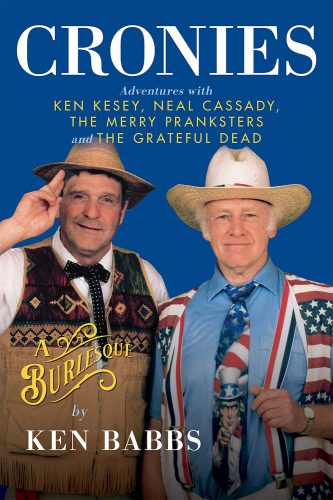
It was a hot August night on August 27, 1972 — 98 degrees to be exact — when owners of the Springfield Creamery, Chuck and Sue Kesey, saved their creamery and put on the show of a lifetime with the help of the Grateful Dead.
“It was so hot the guitars couldn’t stay in tune,” artist, author and member of the infamous Merry Pranksters, Ken Babbs says.
The Keseys, who had become friends with the Grateful Dead through Chuck’s brother Ken, asked the Dead to play a benefit show to help ease some financial troubles their business Springfield Creamery was facing. What resulted was a show with a crowd of thousands at the Veneta site of the Oregon Country Fair.
Babbs called the show “The Field Trip.”
“It was tremendous,” he says.
Babbs and Ken Kesey emceed the event. “The band finished with ‘Dark Star,’ and it is still the best version ever done anywhere,” Babbs says.
Babbs and Ken Kesey were fixtures of Eugene’s hippie culture in the ’60s and ’70s. In 1964, the two traveled across the country in a bus together, fueled by pitchers of acid-infused orange juice — best known via Electric Kool-Aid Acid Test by Tom Wolfe, which chronicles the adventure. They pulled pranks together like driving their bus backward on a main street in Phoenix, Arizona, with a Barry Goldwater poster plastered on the side of their whip. They hosted “acid parties” with laminated Acid Test cards at Kesey’s house in Southern California. And in the ’70s, they brought their beatnik sensibilities to Eugene.
“Oh the ’70s — I don’t remember much of the ’70s,” Babbs jokes.
What Babbs does recall from Eugene back then was the beautiful nature and people who lived without “fear” and “restriction.”
“It was just a groovy place to be,” he says.
In January 2022, Babbs published a book called Cronies, a Burlesque: Adventures with Ken Kesey, Neal Cassady, the Merry Pranksters and the Grateful Dead. The book chronicles his adventures throughout the years with a series of short stories from his technicolor time in the ‘60s and ‘70s. Find copies at Tsunami Books.